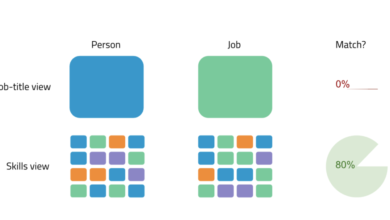How to adopt generative AI without painting yourself in a corner

Generative AI (GAI) has recently captured significant attention from companies. Despite widespread interest, many organizations have
struggled to realize substantial outcomes from their GAI investments, resulting in deployments that look quite similar and may not yield maximum returns on investment.
The problem is in the prioritization plan: for many companies, there is none. They use a scattershot approach, funding
prototypes where they pop up with some measure of stakeholder support instead
of having a prioritization plan that
ties GAI efforts directly back to optimizing customer value. Given GAI’s potential, companies should ask: are we working on the right things? Is GAI just for tactical enhancements, or is there a strategic angle we should be
examining?
This article will
discuss a better method for prioritizing GAI adoption in an organization. We will set the context by highlighting the competitive reasons why companies should begin assessing
GAI adoption immediately instead of waiting
for “things to settle down.” Additionally, we will evaluate the company’s genuine appetite for GAI
adoption, conducting a realistic
examination of what is possible given the current state of the company and its
culture.
Finally, we will suggest how to maximize adoption to enhance customer value as well as prepare the company to unlock two additional levels of GAI embracement that carry the
potential for significantly more company and customer value. These extra levels of value will be covered in more detail in subsequent articles.
Generative AI may be the largest technology transformation since the cloud (which itself, is still in the early stages), and perhaps since the Internet. The amount of societal and business benefit from the solutions that will be possible will astound us all.
Andy Jassy, Amazon CEO in a letter to shareholders
The competitive imperative for GAI adoption
There are two primary reasons why
companies should care about GAI adoption. The first is competitive pressure. While GAI provides a
potent toolkit for enhancing your business, it also enables competitors to do so, potentially fueling the rise of disruptive threats
from “GAI-native” startups by baking GAI capabilities into their DNA from inception.
The second reason for companies to
care about GAI is the risk of “shadow AI.” Similar
to shadow IT, shadow AI refers to business teams deploying AI in
your organization without
proper governance. It is likely that some of your teams are already experimenting with putting sensitive company data into GAI foundation
models like ChatGPT for diverse use cases, ranging from generating marketing plans to brainstorming product
ideas and more.
In an era of inexpensive and widely available GAI, restricting
access is futile. The only effective counter is providing a company-approved GAI solution tailored to organizational requirements and trained on
proprietary company data that works better for your staff than general-purpose, public models.
Assessing your organization’s readiness for GAI
GAI’s potential applications are vast, with numerous use cases already documented on the web. However, a crucial question is not what GAI can hypothetically do but rather what
your organization can realistically absorb and implement through your efforts.
Two key factors define your ability to properly introduce GAI into your organization:
- Your scope
of authority: Be realistic about where in the organization you hold influence. - Organizational appetite for change: Determine whether the inclination for change within your scope is incremental or transformational.
Our GAI Adoption Matrix describes options at the intersection of these factors. Understanding your constraints is critical. Carefully choose your box from the matrix before proceeding.
Prioritization, and the pitfalls of an ad-hoc approach
In many organizations, there are obvious areas where GAI can be helpful and provide significant ROI. For instance, DataArt recently introduced an
autonomous agent as a first level of support for an airport’s contact center, yielding significant business advantages.
Background:
- Phone conversations volume: 10
million minutes monthly, averaging 10 to 20 minutes per conversation. - Call requests constituted 60% of the total request volume handled by the contact center, while
email and chat accounted for 30% and 10%, respectively.
Benefits of the GAI prototype:
- A 30% reduction in calls with client-facing chatbot responses led to a significant decrease in the call-handling workload – a decline of 3
million minutes per month or 36 million annually. - Chatbot-managed requests were processed significantly faster
compared to calls. - Agents demonstrated increased
effectiveness by utilizing internal chat with
access to call transcripts and internal documentation. - Travelers now resolve their inquiries in chat within approximately 3 minutes compared to 10-20 minutes previously.
- Improved customer
satisfaction scores due to faster and more accurate responses. - Utilization of audio transcripts for fraud detection by analyzing the tone of voice and detecting suspicious conversation patterns.
This kind of success represents a significant
achievement, particularly for companies with substantial investments in contact
centers. It is certainly an attractive option, and many companies are planning to try similar projects.
To avoid this fate, implementing a more strategic approach is essential. By investing slightly more effort to provide a
framework for leveraging GAI across the
organization, even starting in a single business function, companies can mitigate these
risks and pave the way for sustainable success.
A rational methodology for prioritizing and implementing GAI
Remember the serenity prayer? It is still good practice. By this point, you have examined the AI adoption matrix to assess your scope of
authority and your company’s appetite for change to better understand what you
can influence or control and what you cannot. With those constraints firmly in mind, begin prioritization by clearly defining your unique value proposition (UVP): why do customers choose you over competitors? Be objective here. Claims like “we have better people” or “we offer superior products” require substantiation, preferably through objective metrics. If you do not confidently know why your customers
choose your products, ask them directly.
Next, identify the key internal
activities and resources that deliver your UVP. If you compete on product innovation, prioritize your
R&D efforts. For price leadership, focus on sourcing and logistics. Trial-driven
growth puts marketing in the spotlight. Concentrate on strengthening what makes
you uniquely valuable to your customers. The key questions are:
- What is our UVP? Why do our customers
choose us over competitors? - What are the key activities that we
use to deliver our UVP? - Which
business functions in the company execute those key activities? - Therefore,
how can we deploy GAI to support and strengthen those
business functions delivering the essential activities that drive our UVP?
Now
you can develop a prioritized GAI
use case roadmap aligned with the needs of these
key business functions as they support
your UVP.
Creating
a common GAI stack enables your applications to share with and build upon each other
Once you know what to
build, think about a coherent, underlying GAI technology stack to maximize sharing and
portability. This might include fast, efficient, small language models like Mixtral 8x7B for proprietary training in your company’s specific
brand, products, and customers, plus a regularly updated external LLM like GPT-4, Claude Opus, or Gemini Ultra
for broad knowledge and research. These are
examples, your models may vary.
Describe your comprehensive GAI
framework directionally. It
is
not necessary to list specific choices at this point,
specifics
will come from the needs of your prioritized use case lists.
- Models, architecture, and usage guidelines
- Supporting tools (APIs, fine-tuning, RAG, etc.)
- Vendor
ecosystem/cloud relationships - Expected
benefit and cost drivers
This
approach ensures your GAI strategy focuses on enhancing your competitive
advantage rather than for the sake of expediency. You will be equipped to build on a unified foundation instead of a fractured mess.
As GAI continues its rapid advancement, organizations that take a strategic and measured approach to adoption will be best positioned to harness its competitive benefits while mitigating risks. By aligning GAI initiatives with core value propositions, building on a unified technical foundation, and remaining responsive to the evolving landscape, companies can navigate this transformative technology effectively.
In the coming years, GAI is likely to become an
increasingly essential part of the enterprise technology stack. As with any powerful tool, the advantage lies in knowing how
to use it effectively. Thus, organizations that master this technology soonest will lead the way
in a GAI-driven future.
About the author…
Learn more



